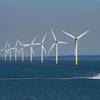Goliat Field Vessel Switches to Battery Power
Norwegian subsidiary of Italian oil company Eni Norge AS and Stavanger shipping company Simon Møkster Shipping cut fuel consumption on the vessel Stril Barents in the Goliat field.
According to a press release from the Norwegean offshore vessel owner, this should be done by installing a land flow system combined with an energy storage battery solution on board.
The system will provide better control and higher safety margins as it is installed in addition to existing engines on board. During demanding offshore operations such as dynamic positioning along installations, large load variations can occur, it said.
According to the release, the battery will act as an energy buffer that supplies the required energy immediately and thus much faster than an internal combustion engine. The battery may also act as pure redundant power source, which again will allow for reduction of need for running an internal combustion engine as this redundant power source. This will, for sure, contribute to a large saving of fuel and subsequently also large emission reductions.
"This is an initiative that strengthens Goliat's already strong environmental profile with power from shore and injection of produced water. It is important for us to contribute to the reduction of total emissions, even if emissions from supply vessels are not part of our emissions statistics ", says Asbjørn Skoge, District Manager in Eni Norge.
When the vessel is alongside at the base, the vessel can connect to the shore power facility, thus reducing fuel consumption and emissions. In addition, this system may be used to recharge the ship's new battery system. The project will be completed during the summer of 2019 in close cooperation between Eni and Simon Møkster Shipping. Main suppliers will be Vard and Kongsberg Maritime. The battery will be delivered by Corvus.
Stril Barents is already one of the most environmentally friendly vessels within the offshore sector. Natural gas (LNG) as fuel ensures already low emissions of NOx and particulate matter. Installation of a Battery/Shore Connection system will lead to further reductions of emissions to the environment compared with conventional vessels.
DNVGL’s Class notation Battery Power will be achieved upon completion of the Project. The NOx Fund has committed support for this project. Overall, the goal is to achieve annual emission reductions in the range of 1400 tonnes of CO2 and 12 tonnes of NOx.















